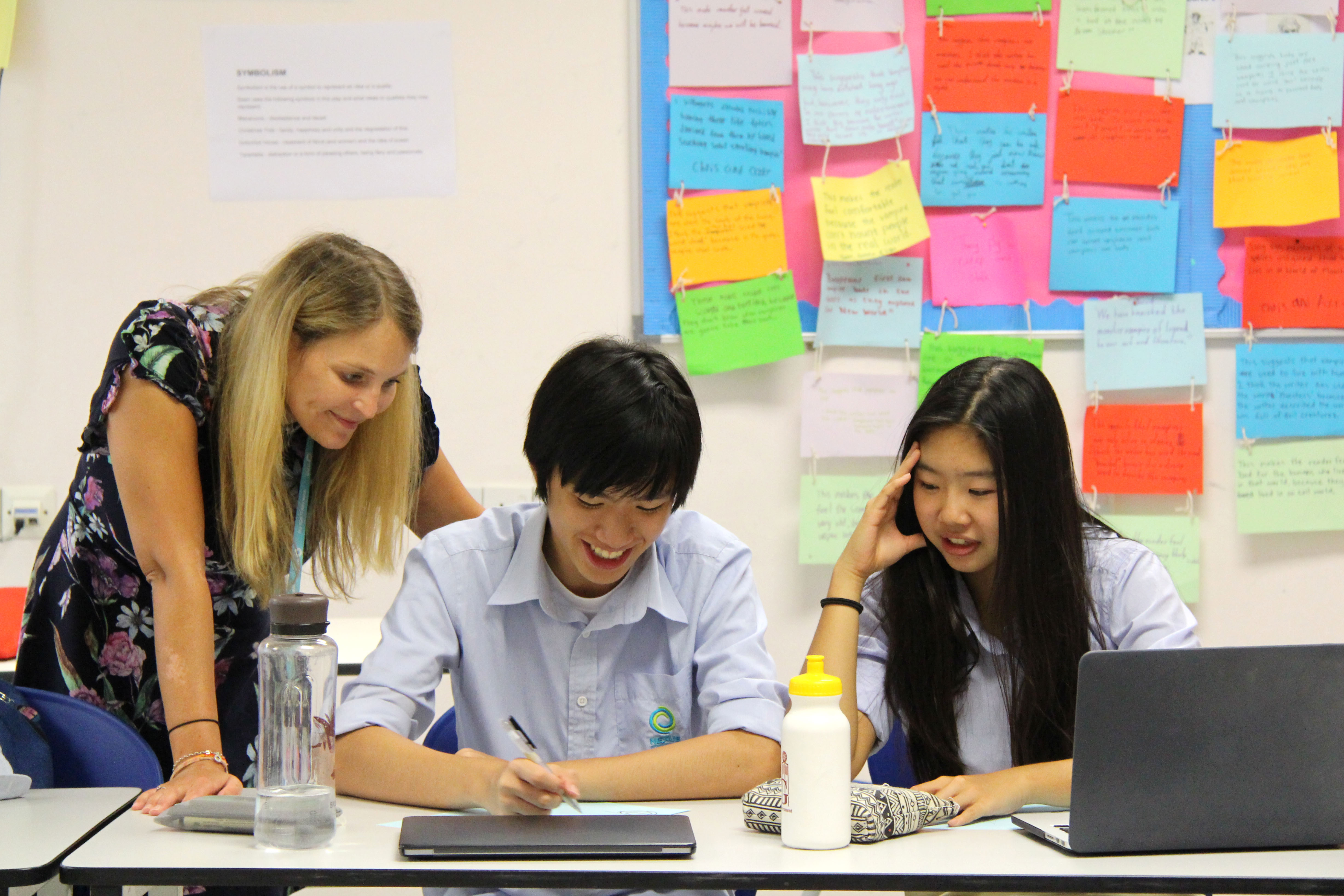Reimagining Poetry

Mar 8, 2018
Last week, the poems of Scottish poet Carol Ann Duffy took the spotlight in Year 12’s English Literature class. In a refreshing way, our learners explored the purpose and themes of Duffy’s poetry using a creative compass method.
Led by our teacher, Ms Samantha Franklin, she used the compass as a visual representation of the themes that Carol Ann Duffy explores in her poetry. Some themes include gender, social inequalities, oppression, emotions and the construction of the self. “The reason for the compass metaphor was to help illustrate to learners that Duffy can explore different themes at the same time - a poem doesn’t have to be about one thing,” says Ms Franklin. When practised in class, the method promotes flexible thinking among our learners in the classroom.
The visual image on the floor helped learners to move around as the learners explored the different themes in Duffy’s poems. Ms Franklin also finds the visual representations useful for learners who are growing up in a world surrounded by images.
"I have used a similar idea with my Year 11 learners by decorating a Christmas tree with 'key quotations' decorations to explore the symbolism of the tree in the play titled A Doll's House”. Aiming to create memorable learning experiences where possible, she wants to help learners to remember ideas and information for the exams that they sit.
In terms of other creative tools, our English Literature teacher also employed several of the Kagan’s techniques to enhance collaboration in her classroom. “As Kagan is all about establishing routines and structures for learners; my favourites have to be Think-Pair-Share, Mix-Pair-Share and Quiz Quiz Trade”.

Led by our teacher, Ms Samantha Franklin, she used the compass as a visual representation of the themes that Carol Ann Duffy explores in her poetry. Some themes include gender, social inequalities, oppression, emotions and the construction of the self. “The reason for the compass metaphor was to help illustrate to learners that Duffy can explore different themes at the same time - a poem doesn’t have to be about one thing,” says Ms Franklin. When practised in class, the method promotes flexible thinking among our learners in the classroom.
The visual image on the floor helped learners to move around as the learners explored the different themes in Duffy’s poems. Ms Franklin also finds the visual representations useful for learners who are growing up in a world surrounded by images.
"I have used a similar idea with my Year 11 learners by decorating a Christmas tree with 'key quotations' decorations to explore the symbolism of the tree in the play titled A Doll's House”. Aiming to create memorable learning experiences where possible, she wants to help learners to remember ideas and information for the exams that they sit.
In terms of other creative tools, our English Literature teacher also employed several of the Kagan’s techniques to enhance collaboration in her classroom. “As Kagan is all about establishing routines and structures for learners; my favourites have to be Think-Pair-Share, Mix-Pair-Share and Quiz Quiz Trade”.
